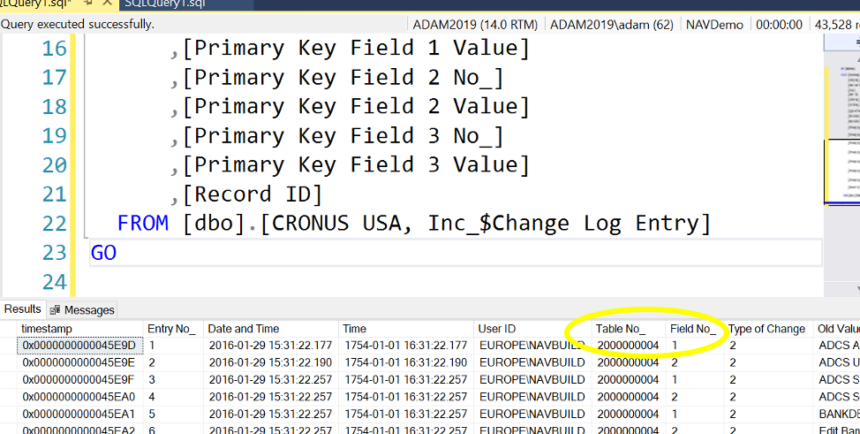

Therefore, for backups and restores, the NetBackup Client Service on the client system must be set to logon as a Windows account that is a member of the SysAdmin server role in SQL Server, and any user logging onto the client system to perform backups or restores using the NetBackup MS SQL Client must also be a member of the SysAdmin server role in SQL Server, and a member of the local Windows Administrators group.Īlong with the abovementioned permissions, we also need to assign few security policies on the SQL server.
The following roles have permissions to perform restores:ĭB role : db_owner (if the database exists) The following roles have permissions to perform backups: SQL Server's authentication requirements are the following as documented by Microsoft: Join the nixCraft community via RSS Feed, Email Newsletter or follow on Twitter.The service account used to perform NetBackup for Microsoft SQL Server backup and restore operations must be a member of the local Windows Administrators group. He wrote more than 7k+ posts and helped numerous readers to master IT topics. Here we deny permissions for project admins. Change the permissions so that the team member or group can't edit, delete, or change permissions for the query. Choose the actions icon and select Security. Vivek Gite is the founder of nixCraft, the oldest running blog about Linux and open source. You can set permissions by opening the permissions dialog for the specific query. Read the pkgchk command man page for more information: Please note that the pkgchk command does not restore setuid, setgid, and sticky bits. Solaris Unix command exampleīoot Solaris / OpenSolaris box in single user mode. However, the apt command, dpkg or apt-get command doesn’t support this option. Only rpm command / Solaris pkg and AIX command support package file permission reset option. A note about Debian / Ubuntu Linux distributions Say if you mnaged to completely mess up file permissions for a given package named zip, try:įig.01: Reset file permissions and ownership of installed PackageĪbove command, combinations should reset all the permissions to the default permissions under a CentOS / RHEL / Fedora Linux. You need to use combination of rpm and a shell for loop command as follows:įor p in $(rpm -qa) do rpm -setperms $p doneįor p in $(rpm -qa) do rpm -setugids $p done rw-r-r- 1 root root 596 /usr/share/man/man1/zipsplit.1.gz Reset the permissions of the all installed RPM packages rw-r-r- 1 root root 793 /usr/share/man/man1/zipnote.1.gz rw-r-r- 1 root root 951 /usr/share/man/man1/zipcloak.1.gz To configure permissions for a new user or group, click Add. Click to select the Define this policy in the database check box, and then click Edit Security. rw-r-r- 1 root root 3395 /usr/share/doc/zip-3.0/algorith.txt In the right pane, double-click the service whose permissions you want to change. You can also specify the object name to see the permissions for that just that object. rw-r-r- 1 root root 210354 /usr/share/doc/zip-3.0/CHANGES This command will show you the permissions that have been granted or denied for all objects in a database. Therefore, well execute the same query for public as we have for master, msdb, and tempdb, just on model.

Thats because model is what is copied to generate a new user database. You may have to register before you can post: click the register link above to proceed. When query user returns information, a greater than (>) symbol is displayed before. Alternatively, you can also use the query session command to display a list of all sessions on a server.
We can query model for public to see what public is normally granted. solved server query permissions If this is your first visit, be sure to check out the FAQ by clicking the link above. If you don't specify a user using the < username >, < sessionname >, or sessionID parameters, a list of all users who are logged on to the server is returned.That just leaves a generic user database. rwxr-xr-x 1 root root 102680 /usr/bin/zipsplit SQL Server Permissions for User Defined Databases. rwxr-xr-x 1 root root 98584 /usr/bin/zipnote rwxr-xr-x 1 root root 107104 /usr/bin/zipcloak Sample outputs: -rwxr-xr-x 1 root root 212048 /usr/bin/zip
SERVER QUERY PERMISSIONS RESET ZIP
You can list individual installed package file permission using following shell for loop (for example list file permission for zip package):įor f in $(rpm -ql zip) do ls -l $f done You can list all installed package with rpm -qa command:

To reset permissions of files in a package, run the following rpm command: Please note that this troubleshooting tip is about resetting the permission of the installed package files and not about end users files stored in /home directory.


 0 kommentar(er)
0 kommentar(er)
